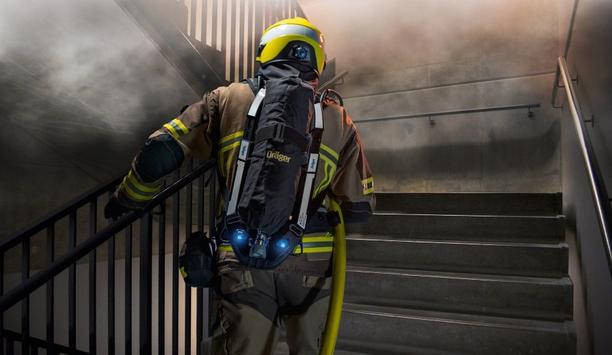When public safety agencies, including police, fire, and ambulance, work together to meet the needs of a region, citizens are better protected, and a better quality of life for all is promoted. However, today’s public expectation demands agencies embrace digital transformation, for those partnerships to be effective and efficient and vitally, connected with the public they serve.
This can involve the integration of operational systems, such as computer-aided dispatch (CAD) in a public safety answering point (PSAP) and those used by other organizations, or the implementation of one system across multiple agencies.
Public safety systems under pressure
Public safety systems are under a lot of pressure, and digital transformation provides the foundation to handle the scale, complexity, and unpredictability that comes with rapidly changing, multi-dimensional incidents and legislative demands. This is especially true for those regions that rely on multiple-agency partnerships. For example, remote areas where agencies such as mountain rescue will be required to work seamlessly with the air ambulance.
This is where cloud-based systems come in. Scalability and resilience are especially important, when you look at the responsibilities that fall under the remit of emergency services organisations. Whether it is, for example, police or fire, response calls can range from small day-to-day incidents to massive events, such as natural disasters or crowd disorder. Cloud-based systems can address this range, intuitively aiding the responders no matter the bespoke nature of the call.
Complex emergency service structures
In the United Kingdom, while the government has sought to improve emergency services integration and collaboration, the situation is complicated due to the many different authorities that control emergency response and because few of their boundaries are coterminous.
However, in major cities, such as London, jurisdiction is more focused, led by a single Fire Authority or Commissioner
For example, in non-metropolitan areas, fire and rescue falls under the jurisdiction of combined fire authorities involving many different local councils and other authorities in the region. However, in major cities, such as London, jurisdiction is more focused, led by a single Fire Authority or Commissioner, with the local Mayor accountable for setting the annual budget.
Then, there are the, often county-based, police forces and regional ambulance services, who fall into different hierarchal structures, all with different boundaries. All of this complexity creates barriers, which can develop into rigid siloes. This is the landscape that these organisations hope to improve by using cloud-based systems.
Ensuring citizen data privacy
Across all these structures run competing political priorities, as well as distinct legacy IT systems that must be surpassed to achieve seamless integration. Lastly, the services must ensure the public that there will be no unnecessary government personal intrusion through the technology.
Citizen data privacy must be a leading consideration, especially in light of the recent increase in cyber-attacks directed at the public sector. For example, the WannaCry ransomware attack on the National Health Service in 2017.
Cloud-based systems
There are multiple advantages to moving emergency services systems, such as CAD, to the cloud – greater access, flexible connectivity, and communication through a government accredited secure platform.
Moving to the Cloud enables more informed and timely decisions from emergency services personnel, more effective use of resources, and increased understanding and engagement, the overall impact of this is greater resiliency and safety for the emergency services, and the public they serve. Vitally, when the Cloud is used effectively and services are subsequently improved, public trust in emergency service institutions is reinforced.
Benefits of the Cloud
The benefits of the Cloud are most evident in public safety, when it comes to cross agency collaboration
The benefits of the Cloud are most evident in public safety, when it comes to cross agency collaboration. Cloud platforms create a shared point of access to data that is currently split between multiple siloed organisations. This means that every agency, responding to an incident, will have the same information in real-time, greatly improving their coordination. This allows personnel to react to events on the ground, as they happen with no delays or confusion arising from misrelated communication.
In a potentially chaotic emergency environment, the value of immediately sharing information in secure, trusted partner relationships cannot be overstated, when it comes to saving lives or ensuring staff safety.
Attributes of an efficient public safety cloud platform
There are several consistent considerations for public safety agencies looking to choose a cloud solution, as the foundation for the digital transformation process. The leading factor is collaboration and working together to form a checklist that can be used to identify an effective next-generation public safety solution.
First, public safety agencies need a cohesive user experience for advanced communications and insight. This a basic element of any unified system. It ensures interoperability across all solutions and platforms, and unites capabilities beyond dispatch, and call-taking to include analytics, planning, and reporting features.
The benefits of systems integrations
When systems are integrated across public safety agencies, any organization can ensure effective communications for smarter, faster decision-making, which is essential to public safety work.
Another leading consideration is that of public trust. When public safety professionals can harness operational data, they have more tools to make better-informed and more-timely decisions, allowing them to demonstrate increased public understanding and engagement.
This results in more transparency and better evidence-based communication to demonstrate to the community that these services are acting for the public good.
Return on Investment (ROI)
An option here is to use a Software-as-a-Service (SaaS) platform, as these are often implemented on a subscription-basis
Return on Investment (ROI) must also be factored into every decision. Public safety agencies have finite budgets and therefore, it is crucial to pick a cloud-based service that is cost effective. An option here is to use a Software-as-a-Service (SaaS) platform, as these are often implemented on a subscription-basis. Therefore, there is a predetermined cost and billing process which makes it much easier to track expenses and only pay for additional capacity when it’s needed.
Lastly, any solution chosen must be easily adaptable and future-proof. The UK Government has oversight over emergency service policy legislation and there is always the potential for updates or amendments, for example the temporary changes brought in during the height of the COVID-19 pandemic.
Therefore, the selected platform must have the capacity to evolve in line with legislation through easily configurable workflows and customer business rules. It is vital that the cloud platform does not become just another legacy system that agencies must navigate when improving their services.
A clear need for cloud transformation
The benefits of cloud systems to public safety services are myriad. Ultimately, they improve the pace and quality of the emergency services’ response, which can in turn lead to the saving of citizens’ lives. A fundamental element is that they allow multiple agencies to focus on what they do best, unencumbered by managing the technology, responding to incidents together, with all services acting as a unified force in confronting any crisis.
However, for the full benefits of cloud to be realized, certain attributes must be embraced when selecting a system, such as user experience, public trust, ROI, and adaptability. Once these attributes are secured, the improvements cloud-based systems can bring are limitless.







